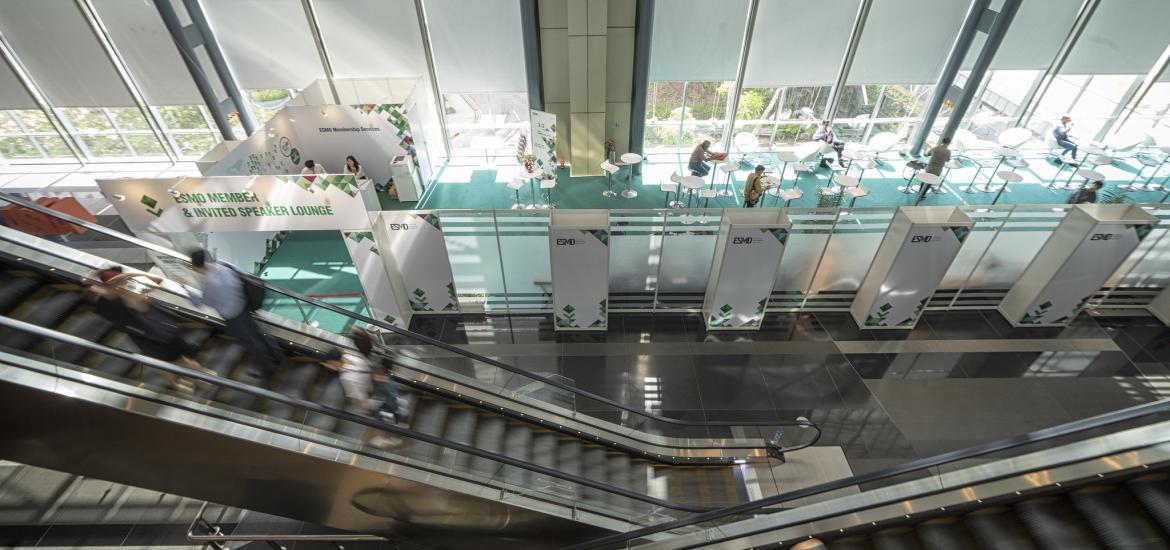
ESMO 2023 – tarlatamab hits the target for Amgen
But late-breaking data raise questions about lack of a dose response.
But late-breaking data raise questions about lack of a dose response.

When Amgen toplined the mid-stage success of its DLL3-targeting project tarlatamab in late-line small-cell lung cancer in August it said results had “substantially” exceeded those seen in phase 1. Now a late-breaking ESMO abstract has backed those claims.
However, there are reasons to be cautious about the data from the phase 2 Dellphi-301 trial – not least because of a lack of dose response.
Third-line SCLC
Dellphi-301 tested tarlatamab, dosed at 10mg or 100mg every two weeks, in third-line or later SCLC. Amgen has previously said it would discuss the data with regulators.
Approval now looks likely, particularly as these patients have few options.
The primary endpoint was ORR, and this came in at 40% with the 10mg dose – well above the 23% ORR seen in phase 1, although that early-stage trial tested various doses, ranging from 0.003mg to 100mg.
The latest result is also particularly impressive given that patients in Dellphi-301 appear not to have been preselected for DLL3 expression.
However, the lower ORR in the higher 100mg dose group, 32%, could cause eyebrows to be raised about a lack of dose response.
Data from the ph2 Dellphi-301 trial of tarlatamab
| Dose | 10mg | 100mg |
|---|---|---|
| ORR | 40.0% (40/100)* | 31.8% (28/88)** |
| mOS (months) | 14.3 | NE |
| mPFS (months) | 4.9 | 3.9 |
| Any cytokine release syndrome | 51.1% | 60.9% |
| Grade 3 cytokine release syndrome | 0.8% | 5.7% |
| Discontinuation due to TRAEs | 3.0% | 3.4% |
*Includes 1 CR; **Includes 7 CRs. Source: ESMO.
As for adverse events, the most common was cytokine release syndrome. This is probably not unexpected with a project like tarlatamab, a T-cell engager, but will have to be managed. The abstract notes that there were no grade 4 or 5 adverse events. More details on toxicity will be awaited at the full ESMO presentation on Friday.
DLL3 competition
The latest findings could put DLL3 back on the agenda: the mechanism took a blow when AbbVie discontinued Rova-T in 2019 after it failed in phase 3 for SCLC. The company had gained the project through the $5.8bn acquisition of Stemcentrx.
Some believe that the problem was Rova-T rather than the target. The AbbVie asset was an antibody-drug conjugate, while most of the DLL-targeting projects now in development are T-cell engagers.
Aside from tarlatamab, two other DLL3-targeting assets will also feature at ESMO: Boehringer Ingelheim’s BI 764532 and Harpoon’s HNP328, in a non-late-breaking oral presentation and a poster respectively. However, these are early, dose-escalation trials, and the abstracts for both note that a maximum tolerated dose has not yet been reached.
Amgen is already well ahead of its rivals, and on the strength of Dellphi-301 could become the first DLL3 player to make it to market.
Oncology assets targeting the DLL3 antigen
| Project | Company | Mechanism | Key trial | Focus |
|---|---|---|---|---|
| Tarlatamab (AMG 757) | Amgen | Bispecific T-cell engager | Ph2 Dellphi-301 | 3L SCLC (data at ESMO 2023) |
| BI 764532 | Boehringer Ingelheim | Bispecific T-cell engager | Ph1 | SCLC & neuroendocrine tumours (focus on NETs at ESMO 2023) |
| HPN328 | Harpoon Therapeutics | Trispecific T-cell engager | Ph1/2 | +/- Tecentriq in SCLC (data at ESMO 2023) |
| ZG006 | Suzhou Zelgen | Bispecific T-cell engager | China Ph1/2 | SCLC & neuroendocrine tumours |
| LB2102 | Legend Biotech | CAR-T cell therapy | Ph1 | Extensive stage SCLC & LCNEC |
| PT217 | Phanes Therapeutics | Anti-DLL3xCD47 bispecific Mab | Ph1 | SCLC, LCNEC, NEPC, GEP-NET |
| QLS31904 | Qilu Pharmaceutical | Bispecific T-cell engager | China Ph1 | Advanced solid tumours |
| RO7616789 | Roche/Chugai | Trispecific 41BB-costimulated T-cell engager | Ph1 | Advanced SCLC & neuroendocrine tumours |
Note: GEP-NET=gastroenteropancreatic neuroendocrine tumours; LCNEC=large cell neuroendocrine cancer; NEPC=neuroendocrine prostate cancer. Source: OncologyPipeline.
4418













